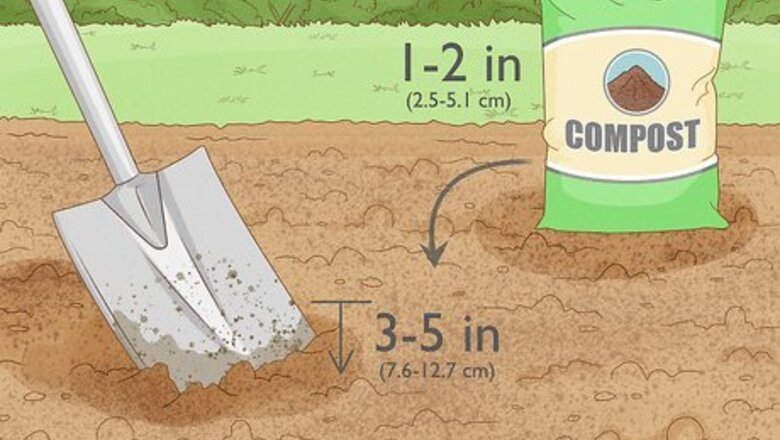
views
- Use compost, animal manure, bone meal, rock phosphate, or green manure for natural sources of phosphorus.
- Add it to your soil 1-2 weeks before you plant for best results. You can also add it during the growing season to give your plants a little extra oomph.
- Check for stunted plant growth or a dark green coloring on your plants to determine if you need to add phosphorus. You can also use a soil test kit.
Natural Sources of Phosphorus
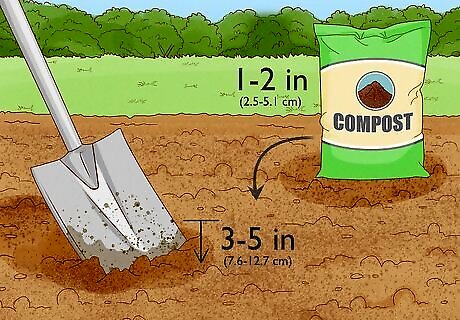
Compost Compost is a natural fertilizer that releases phosphorus, nitrogen, and potassium over time. You can make your own compost out of kitchen scraps at home, or you can buy pre-made compost for your garden. To add compost to your soil, sprinkle 1 to 2 in (2.5 to 5.1 cm) of compost over bare soil and use a rake or a shovel to mix it with the top 3 to 5 in (7.6 to 12.7 cm) of dirt.
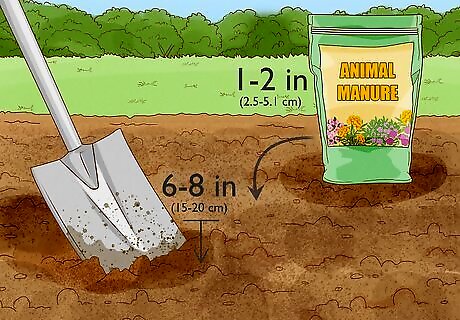
Animal manure Animal manure provides phosphorus, nitrogen, and potassium to your soil. Simply buy a bag of animal manure and sprinkle 1 to 2 in (2.5 to 5.1 cm) over your garden. Mix it with the top 6 to 8 in (15 to 20 cm) of soil to provide nutrients over time. It’s best to buy pre-made manure that’s been tested. That way, you know exactly how much of each nutrient is in the manure before you use it.
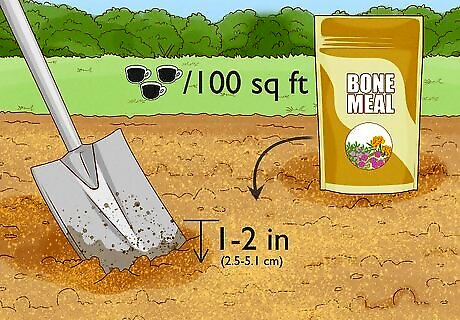
Bone meal Bone meal is made from steamed animal bones, and it adds both phosphorus and calcium to your soil. To add bone meal to your soil, measure out about 3 cups (384 g) per 100 square feet of soil. Sprinkle the bone meal over the dirt, then mix it into the top 1 to 2 in (2.5 to 5.1 cm) of soil.
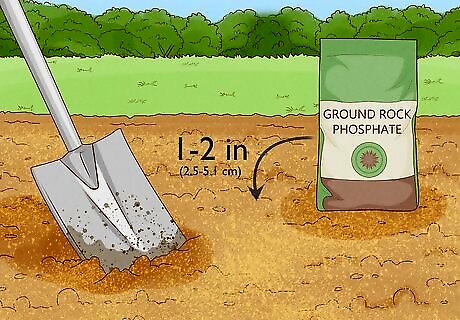
Rock phosphate Rock phosphate is a sedimentary rock that contains phosphate and almost nothing else. If you’re sure that your soil only needs phosphate (and not nitrogen, potassium, or calcium), buy a bag of ground rock phosphate and sprinkle a 1 to 2 in (2.5 to 5.1 cm) thick layer over your soil. Use a rake or a shovel to mix it with the top layer of dirt.
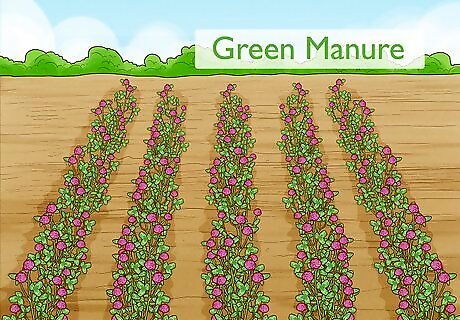
Green manure “Green manure” describes the process of planting crops that are high in phosphorus, then plowing them back into the soil. If you’d like to add phosphorus over a long period of time, plant crops like oat, faba bean, clover, buckwheat, or mustard, and harvest them like you normally would. At the end of the season, till the plant matter back into the soil.
When to Add Phosphorus to Soil
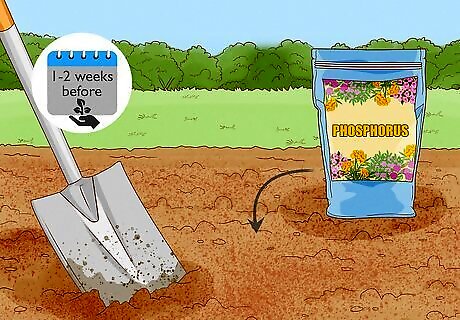
Add phosphorus to your soil 1 to 2 weeks before planting for best results. Phosphorus usually takes a couple of weeks to be released into the soil. You can use phosphorus at any point in the season, but give your soil a few weeks to absorb it before you start planting.
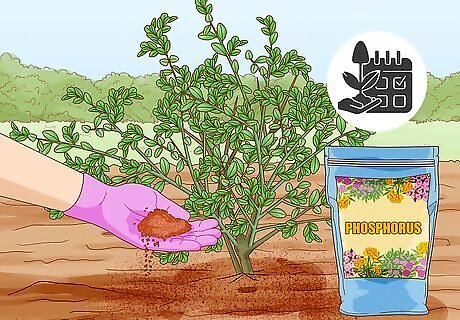
Mix phosphorus into the soil during the growing season to give your plants a boost. If you’ve already planted your crops and you’ve noticed them looking a little blah, you can absolutely add phosphorus to the soil around your plants. Simply sprinkle your phosphorous product, like compost, around the plants, and carefully mix it with the top layer of dirt without disturbing the roots of your crops.
Why is phosphorus important?
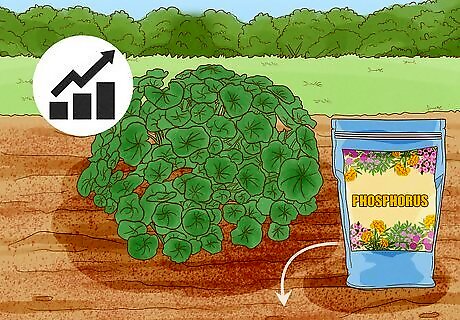
Phosphorus gives plants the energy to create new tissue. The main thing that plants use phosphorus for is protein synthesis. Without phosphorus, your plants won’t have enough energy or nutrients to create new growth, which can slow or even stop the growing process entirely.
How do I know if my plants need more phosphorus?
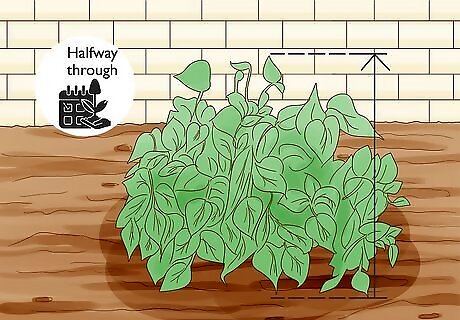
Look for stunted plant growth. Plants low in phosphorus won’t grow as quickly as they should. If you’re halfway through the growing season and your plants aren’t as large or tall as you’d expect them to be, there’s a good chance that your soil is low in phosphorus.
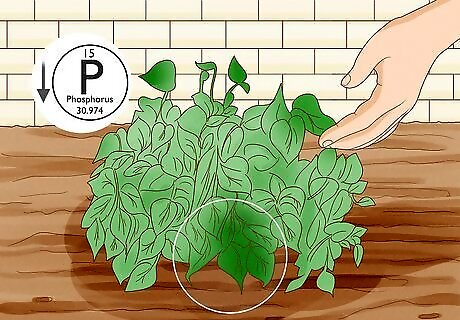
Check for a dark green color on your plants. Plants that aren’t getting enough phosphorus usually have a dark green color on the stems or the leaves. This color will look abnormal and unlike what you’re used to seeing on your plants.
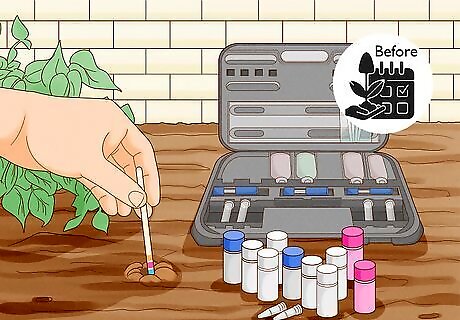
Use a soil test kit. The best way to tell what your soil is lacking is to use a soil test kit. The test kit will tell you the pH of the soil, as well as what nutrients are there and how much of them there are. Do a soil test kit before the growing season to see what your crops need. In general, the optimal range of phosphorus in a vegetable garden is 30 to 50 parts per million (ppm).




















Comments
0 comment